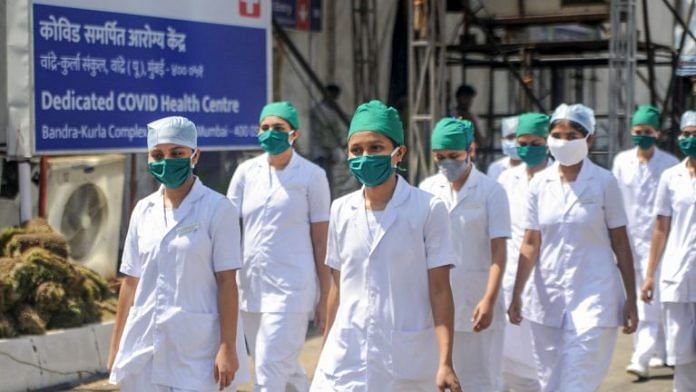
Thank you dear subscribers, we are overwhelmed with your response.
Your Turn is a unique section from ThePrint featuring points of view from its subscribers. If you are a subscriber, have a point of view, please send it to us. If not, do subscribe here: https://theprint.in/
The ongoing Indian medical student evacuation from Ukraine has quantified the unacknowledged gap that exists between need for medical seats and the abysmal lack of opportunities to fulfil students’ desire to be a doctor. India has a gap not just in seats but also of medical jobs. This gap can be plugged through out-of-the-box policy reforms and international agreements.
Indian society allocates extremely high aspirational quotient to engineering and medicine profession. While engineering has taken off and has many affordable colleges, a huge job industry and large contribution to GDP, the medical aspirants are left behind. There are more than 3500 engineering colleges in India. In comparison India has only 479 medical colleges.
‘The number of people who appear for NEET every year is more than 10 lakhs, and there are only about 30,000 government college seats. The rest are private which are more expensive and demand donation too.
Hence students are left with no option but to go abroad’.
Students are not just going to Ukraine but to many other small countries. Medical council of India recognizes 403 universities. Some of these are in developed countries like US, UK but many others are in countries like Georgia, West Indies, Kazakhstan, Romania and some even in Pakistan and Iran.
After an arduous journey of getting into a college and eventually being eligible for a job, the hairy issue is that there are not enough jobs. Even though India has an understaffed public health Care system (PHC) there are still not enough jobs for MBBS graduates. In 2018, the PHC had only 34000 openings vs 67000 MBBS graduates. Most of the private hospital jobs are in urban areas or are specialization centric.
Now if we look at the need from the patient side.
India scores poorly on Universal health care goal by United Nations SDG.
In 2021, it had a service coverage score of only 55 which is the lowest amongst the G20 countries. The SDG also measures the amount of household income spent on healthcare and India has one of the highest amounts here.17% of income is spent on healthcare clearly indicating there is a need for making healthcare more affordable for a low-income country like India.
In recent years, the government has been making some healthcare sector reforms. In 2018, India touched the golden line of having doctor: citizen ratio of 1:1000. +12000 new medical seats have opened just in the last 5 years.
But this is far from what is needed. The government needs to address both sides of the equation.
A-Improve supply of medical seats by simplifying the labyrinth requirements and reducing cost for opening a medical college to make medical education more affordable.
B- Convert the massive healthcare demand into tangible job opportunities for students. This can be done in 3 ways
1- Improve public health care by thinking transformatively about its delivery. India must move away from the brick-and-mortar model and instead create required IT backbone to connect doctors in urban areas to the remote areas. Public health care specialist should be accessible to villagers on video chat and their responses can be tracked to ensure better performance. Medicine delivery can be done within 24 hours through the amazon model of warehousing and hubs. Necessitating travel to urban areas only for chronic issues to specialized hospitals.
2– Create an offshore medical services industry just like the hugely profitable offshore IT services industry. Since India has a huge potential to have high-quality medical talent India must take a lead in fostering agreements with other countries. Raghuram Rajan has been propagating this idea to circumvent the delays in manufacturing industry development stage.
3- Mercurially expand jobs in the high-end trillion-dollar healthcare/pharmaceutical industry and increase medical research. India’s R&D expenditure is far below desired. Countries like Israel and South Korea spend +4,5% of GDP whereas India is only at 0,8%. Even in this low amount only 18% is towards health. India must incentivize private sector to participate more. India’s researcher intensity is just 20% of China. 70% of patents filed by Indians are from non-residents. The corresponding figure for China and Japan is 10% and 20% respectively. This hints at the lack of a research ecosystem in India.
In the recently concluded state elections in 2022, while all political parties have a strong narrative on caste and religion, but most young voters are vociferously seeking jobs. Irrespective of who wins in the state elections, the demand for job creation will not take a back seat. Jobs will be a major electoral ask for 2024 elections. The post-corona and post-Ukraine war (hopefully post) environment will be conducive to drive the necessary policy changes and budget allocations needed for medical job creation stated above.
Also read: ‘Haven’t even seen a cadaver’ — despair grows for medical students as China won’t call them back
These pieces are being published as they have been received – they have not been edited/fact-checked by ThePrint.


COMMENTS